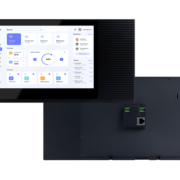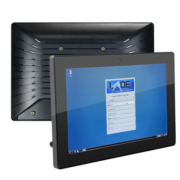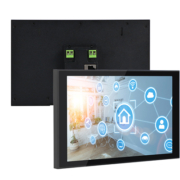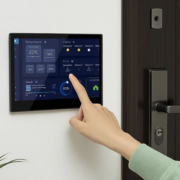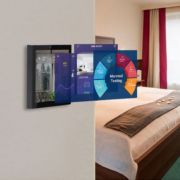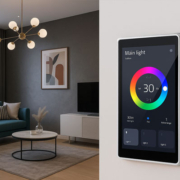How Does a Smart Home Panel Work?
In the era of intelligent living, the smart home control panel stands at the heart of connected automation. Whether you’re turning on lights, adjusting the thermostat, or securing your front door, smart home panels simplify these tasks into one seamless interface. But how exactly does a smart home panel work? In this article, we’ll dive into the mechanics behind these devices, their benefits, and how leading providers like Portworld are shaping the future of smart living.
What Is a Smart Home Panel?
A smart home panel is a centralized touchscreen or physical interface that allows homeowners to monitor, manage, and control various smart devices from one place. These devices can include smart lighting, security systems, thermostats, entertainment units, door locks, and more. Instead of managing each device through separate apps or remotes, a smart control panel offers a unified experience—making home automation accessible, intuitive, and efficient.
How Does a Smart Home Panel Work?
At its core, a smart home panel functions as a control hub that communicates with connected devices via multiple protocols like:
- Wi-Fi: For internet-connected devices such as cameras, speakers, and thermostats.
- Zigbee/Z-Wave: For low-power home automation devices like smart plugs and motion sensors.
- Bluetooth: For nearby devices, often used in locks or personal assistants.
- PoE (Power over Ethernet): For both power and data transmission in high-end installations (like those supported by Portworld panels).
Key Components and Processes:
- Centralized Operating System
Smart panels run on operating systems like Android or Linux, enabling them to host various applications, integrate third-party devices, and offer cloud connectivity. - User Interface (UI)
The intuitive touchscreen interface is designed for ease of use, allowing you to navigate controls, set schedules, view camera feeds, or trigger scenes with a single touch. - Device Integration
The panel communicates with other smart home devices through APIs or standard protocols, syncing real-time data like temperature, light levels, or security alerts. - Automation Engine
Most smart home panels include a built-in automation engine to create “scenes” or rules (e.g., “Turn off all lights at 10 PM” or “Activate security mode when no one is home”). - Cloud Connectivity & Remote Access
Through secure cloud platforms, users can control their smart homes remotely via mobile apps or web interfaces—even when they’re halfway across the world.
Benefits of a Smart Home Control Panel
- Convenience: Control everything from one panel—no need for multiple apps or remotes.
- Security: Easily monitor security cameras, receive alerts, and lock doors from one location.
- Energy Efficiency: Track and optimize energy consumption with real-time data and automated routines.
- Customization: Personalize settings for lighting, climate, or scenes based on time, presence, or mood.
- Professional Appearance: A sleek wall-mounted panel enhances the aesthetics of modern homes.
Portworld: Smart Control Panels That Deliver More
As a pioneer in smart home solutions, Portworld offers a range of high-quality 4-inch and 5-inch smart control panels designed for both residential and commercial applications. Here’s how Portworld stands out:
- PoE Support: Simplifies installation and ensures uninterrupted power and connectivity.
- Custom OS: Built on Android for flexibility, app integration, and third-party compatibility.
- Modular Design: Adaptable hardware design allows for OEM/ODM customization based on customer needs.
- CKD/SKD Delivery Model: Portworld supports local assembly, saving on import duties and offering regional flexibility.
- Engineering Support: Their expert team helps clients tailor the PCBA design, firmware, and interface for optimized performance and cost.
Whether you’re building a new smart home or upgrading an existing one, Portworld panels offer a reliable, scalable, and stylish solution.
Future Trends: What’s Next for Smart Panels?
- Voice Assistant Integration: Native support for Alexa, Google Assistant, and Siri for hands-free control.
- AI-driven Automation: Predictive settings based on user habits and preferences.
- Enhanced Security Features: Including facial recognition, biometrics, and advanced encryption.
- Sustainability Focus: Panels that monitor and optimize water, gas, and electricity use.
- Multi-panel Mesh Networks: Distributed control panels across different rooms for whole-home coverage.
A smart home control panel is more than just a touchscreen—it’s the brain of your connected home. By consolidating device management into a single, intuitive interface, it transforms how we interact with our living spaces. As technology advances, solutions like those from Portworld are setting new standards for flexibility, performance, and customization.
If you’re looking to bring smarter control to your home, explore Portworld’s full range of smart control panels today.


